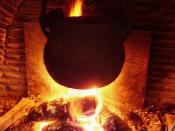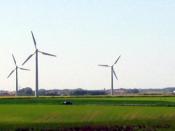OUTLINE
Introduction
Problem
What materials are better for insulation?
What designs are better for insulation?
Purpose
Background
Organizations Researching Problem
Materials
lustrous
dull
dark
light
Design
Windows
Enclosed
Hypothesis
Materials
Procedure
Summary
Materials that Work Best in Heat Efficiency
Designs that Work Best in Heat Efficiency
References
Introduction
Heat efficiency in any architectural design is always a topic that must be addressed. Without this key element, structures would be totally inefficient to heat, not to mention extremely expensive. In order to design a heat efficient building you must first understand where heat is lost or where cold air enters the structure in question. My research will first be to determine what materials are best for insulation and which materials are not. Second, I will try to find where heat is most likely to escape in a structure by researching efficient designs. This, in turn, will provide information to where it is necessary to add more insulation to a particular structure.
Background
It has been proven time and time again that solar energy plays a crucial part in the heating of any structure regardless of its design. The intensity of solar energy is almost an exact constant only varying in energy about 0.2 % every 30 years. This intensity on average is about 1.37 ( 106 ergs per second per cm2, or about 2 calories per minute per cm2. This intensity can vary of course when the solar photons interact with different conditions in the atmosphere. This energy from the sun can be converted so that it is able to heat a structure in many different ways. During my experiment though, I will only be testing the effects of a structure's heat related to passive solar energy as illustrated in figure 1. Passive Solar energy is where the sun's heat is...


